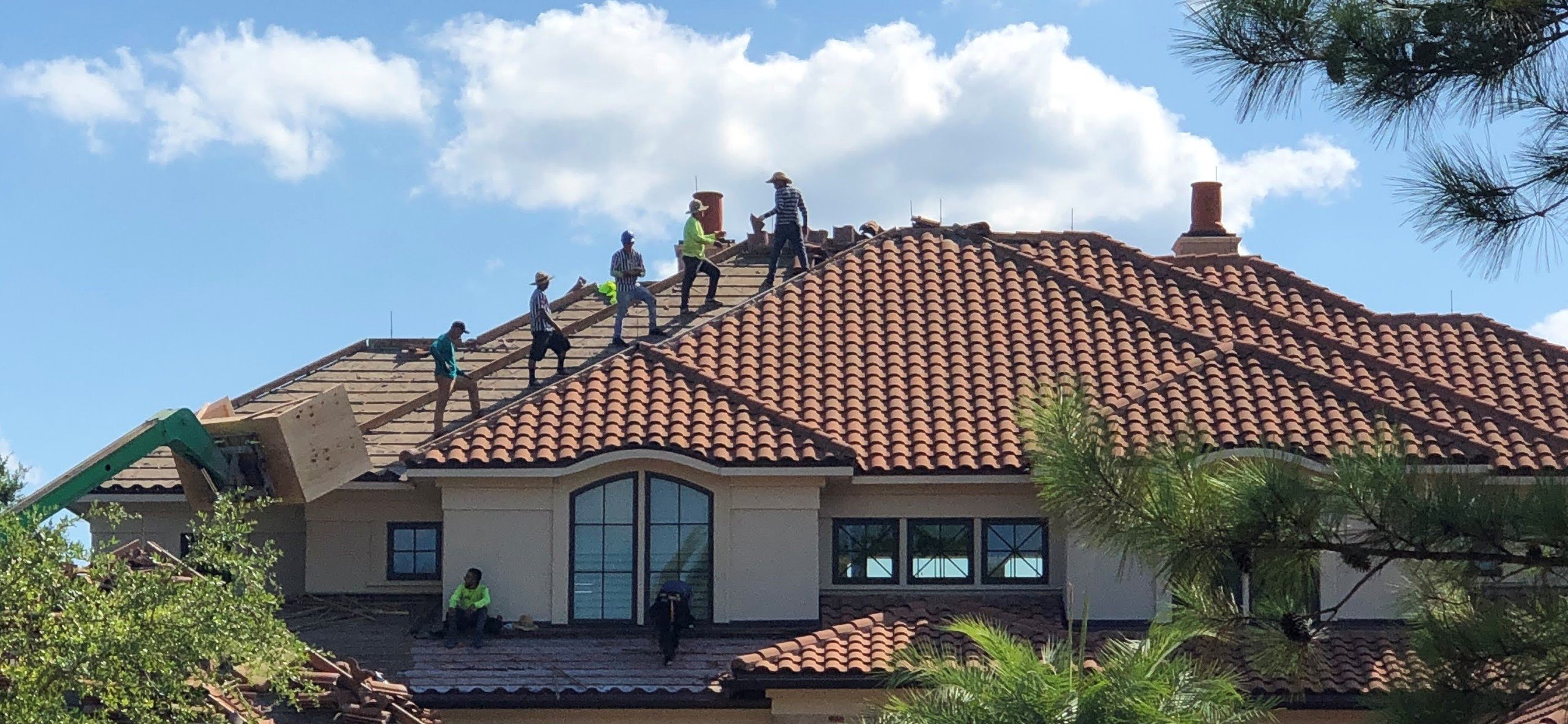Best Practices for Ensuring Appropriate Roofing Air Flow
A balanced consumption and exhaust vent proportion, typically 1:300, plays a crucial role, with intake vents ideally positioned at the lower side of the roofing for great air access and exhaust vents at the optimal for cozy air exit. Maintaining insulation away from vents is vital to protect against air flow restriction.
Understand Air Flow Fundamentals
Correctly understanding ventilation fundamentals is essential for ensuring the long life and efficiency of roof. Efficient ventilation minimizes moisture accumulation and temperature level extremes in the attic, both of which can cause considerable structural damages in time. A well-ventilated roofing aids in avoiding common issues such as mold growth, timber rot, and ice dams, which can jeopardize the honesty of the roofing materials and the underlying frameworks.
The main objective of ventilation is to facilitate the movement of air, permitting a consistent exchange between the interior and outside environments. This balance is attained through a combination of intake and exhaust vents that function with each other to preserve optimum air flow. Intake vents, typically situated along the soffits or eaves, allow fresh air to get in the attic room room, while exhaust vents, frequently situated at or near the roof ridge, enable warm, moist air to leave.
Trick aspects influencing the performance of roof air flow consist of proper placement, adequate sizing, and making certain that both intake and exhaust vents are unblocked. Normal inspection and maintenance are critical to recognize potential blockages, damages, or ineffectiveness in the air flow system, thereby guarding the roof's efficiency and longevity.
Types of Roofing Vents
Roofing vents play an essential function in keeping effective attic air flow and, by extension, the total health and wellness of the roof system. Different sorts of roofing vents are offered, each with distinct advantages tailored to certain roofing demands. Ridge vents, for instance, are mounted along the roofing's optimal, enabling cozy, damp air to leave from the attic. They supply continuous air flow and mix flawlessly with the roofline, making them both effective and aesthetically pleasing.

Soffit vents are mounted under the eaves and job in tandem with roof covering vents to ensure a well balanced consumption and exhaust system. By allowing cooler air to go into from below, soffit vents facilitate the expulsion of warm air via upper vents. Gable vents, situated on the outside wall surfaces of the attic, deal another reliable remedy, especially in homes with gable roofings.
Evaluate Your Current Air Flow

Following, think about the age and condition of your roof products and ventilation components. Older systems might not follow existing building great site ordinance or may have worn away in time, reducing their efficiency. Conduct a complete evaluation to identify any kind of indicators of deterioration, such as corrosion, damage, or gaps that can compromise the system's efficiency.
Additionally, measure the attic temperature and moisture degrees. High temperatures and moisture can show poor ventilation.
Setup Best Practices
Reliable setup of roof ventilation systems is extremely important for making sure ideal efficiency and long life. Correct installation starts with understanding the particular air flow needs of the building and the roofing it covers. This involves calculating the proper ratio of consumption to exhaust vents, normally sticking to the 1:300 policy, which specifies one square foot of air flow for each 300 square feet of attic room flooring room.

The positioning of vents is just as essential. Intake vents should be mounted at the roofing's lower side, often in the soffits, to permit awesome air to go into. Exhaust vents, on the various other hand, must be mounted near or at the roofing's optimal to help with the departure of cozy, moist air. This creates an all-natural airflow that aids preserve temperature and wetness equilibrium within the attic area.
Seal all vent connections carefully to stop air leakages and possible water seepage. Usage why not look here top quality materials and adhere to producer guidelines to make certain durability and effectiveness. Additionally, integrating ridge vents with baffles can substantially improve air movement performance by preventing wind-driven rainfall and snow from entering the attic.
Ultimately, precise installment of roofing ventilation systems mitigates possible issues such as mold development, ice dams, and structural damages, making certain the roof covering's integrity and the building's overall wellness.
Routine Upkeep Tips
Uniformity in upkeep techniques is essential to ensuring the long-term efficiency of roof air flow systems. During these inspections, make certain that vents are cost-free of debris, nests, and other obstructions that can hinder airflow.
Cleaning the vents is another essential job. Make use of a soft brush or a vacuum cleaner to get rid of dust and debris from intake and exhaust vents. Be careful not to harm the vent displays or louvers throughout the process. Furthermore, inspect the attic area for any kind of indications of water damage, which can endanger the integrity of the roof.
Correct insulation is similarly important. Make certain that attic room insulation does not obstruct the vents, as this can drastically restrict airflow. Rearrange or replace it to preserve an effective obstacle. if any kind of insulation has actually shifted or resolved.
Lastly, change any kind of damaged or missing out on elements immediately. Broken vents, cracked roof shingles, or shabby flashing can all contribute to insufficient air flow and should be dealt with without delay. Regular upkeep guarantees that the roofing ventilation system works ideally, consequently expanding the life-span of the roofing itself.
Conclusion
Making sure correct roof ventilation is vital for keeping the efficiency and toughness of a roof covering system. Adherence to the 1:300 consumption and exhaust vent ratio, combined with the tactical positioning of vents, is essential. Normal biannual examinations, particles cleansing, and guaranteeing insulation does not block air movement are vital methods. Implementing these finest practices will promote a well-ventilated roof, consequently alleviating potential concerns connected to moisture build-up and excessive heat, ultimately lengthening the roofing system's lifespan.
A balanced consumption and exhaust air vent proportion, commonly 1:300, plays an essential function, with intake vents ideally put at the reduced side of the roof for trendy air entry and exhaust vents at the peak for cozy air exit. Consumption vents, usually located along look what i found the eaves or soffits, permit fresh air to enter the attic area, while exhaust vents, often located at or near the roofing system ridge, allow warm, damp air to escape.
Soffit vents are installed under the eaves and work in tandem with roof covering vents to guarantee a well balanced intake and exhaust system. By enabling cooler air to enter from below, soffit vents help with the expulsion of hot air with top vents. Adherence to the 1:300 consumption and exhaust air vent ratio, coupled with the critical positioning of vents, is essential.